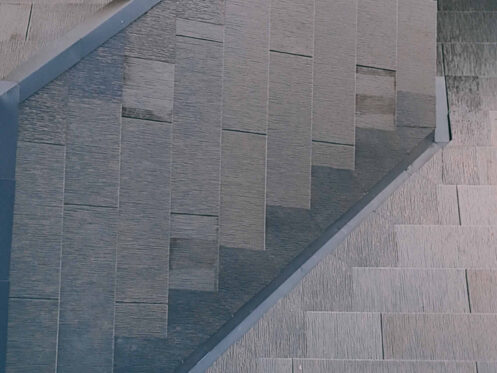Texas is no stranger to severe and erratic weather, and Texans have even developed their own unique language to describe the heat. Here are a few colorful sayings courtesy of Texas Monthly.
So dry the catfish are carryin’ canteens
So dry the Baptists are sprinklin, the Methodists are spittin, and the Catholics are givin rain checks
Hot as a stolen tamale
Hot as a summer revival
It’s been dry so long, we only got a quarter-inch of rain durin Noah’s Flood
Drier than a popcorn fart
According to a recent article by the Houston Chronicle this is one of the five worst droughts seen in Texas in the past 500 years, and it is quickly advancing towards becoming number three. In addition to the dry weather state Climatologist John Nielsen-Gammon predicts possible El Niño conditions, which could mean a wet winter and up to five inches of additional rainfall.
From tornadoes to high winds to massive thunderstorms, Texas weather is far from predictable. The question is do we hope for the best or are we taking steps to ensure that our properties are prepared for climate changes?
“When determining the best course of preparedness for a property, it is critical to consider the most expensive component of that building, which is typically the commercial roof,” said Steve Little, KPost Company president. “You want to be prepared to take on inclement weather by understanding the roofing components, life span and appropriate preventative maintenance to ensure longevity.”
“A Drought Usually Ends With a Flood”
When deciding on the next steps to ensure your commercial property receives the right type of preventative maintenance and you are prepared for anything Texas can throw at you, it’s important to start with a thorough understanding of the state of the building materials and the associated warranties. This means having a sense of what type of maintenance has been previously performed, the materials used and how well they have been maintained, and the repairs performed in the past.
“If you have a prescriptive program that provides solid documentation on what materials were initially used during the building of the property, the warranty period of the materials, and the assessments and maintenance work performed, you have a track record that ensures you truly understand the state of your property. Think of it like a CarFax for your building,” said Luke Legrand of Conner-Legrand, Inc. an independent manufacturer’s representative of roofs, walls and skylights. Luke and his team work with architects, general contractors and building owners to ensure the best product is used for the project. They have the flexibility to recommend multiple products, rather than a single manufacturer line, and are well-equipped to make judgments on the best materials.
“To understand the importance of the right materials, you should first consider that a building is an active entity,” said Luke. “Some buildings may be bought and sold multiple times, so ensuring you know what materials were originally used as well as the maintenance plan not only help provide insight as to the value of the property, but also in how to budget for maintenance and replacement going forward.”
Because proper maintenance is important, it would seem logical that this would be a priority. Property managers and building owners would prioritize preventative maintenance; however, this may not be the case, and if you have inherited a building without good records, you may be in for some unpleasant surprises, particularly when Texas twisters or unexpected droughts hit.
“Come Hell or High Water”
The truth is we don’t know when Texas weather will take a turn on us, causing a leaky roof or other building issues. Without property assessments and maintenance, you may be out of luck and in the rain!
“Buildings expand and contract as the environment heats and cools, and so do building materials and components. However, some materials will move more than others,” said Luke. “Of greater concern are the intersections where different types of materials meet. Manufacturers will give you a lifecycle that is based on their materials, but the wear and tear that occurs at these intersections can impact the overall building envelope. A building owner can benefit greatly from learning to look for issues before they become problems.”
By the time you see water inside the building, there is a build-up of water elsewhere that can wreak havoc throughout the building and outlying structures, including, but not limited to mold. And that’s only with a small amount of water. If there is a major weather event, then the wind gusts can rip up parts of the roof, while water seeps into places it should not be.
Texas weather can change in the blink of an eye. If your property relies on consumer dollars then the perception that you are not caring for your building can cost you more than the commercial roof repair. It can cost you losses in consumer confidence and negative tenant opinions resulting in revenue loss.
“Think about those establishments that depend on consumer traffic in the building. A retail business that has to block off floor traffic to prevent slip-falls not only presents a poor image, it has a large liability exposure. Consider a high-end restaurant with roof leaks; consumer confidence can be shaken and they simply may not return,” said Luke. “By the time you can see a leak, it becomes an emergency call, which always costs significantly more than planned and scheduled maintenance. Building downtime or operations disruption can be very costly, and is usually avoidable, or at least minimized with proper planning.”
Don’t Get Caught “Burnin’ Daylight”
There’s no time to waste! In order to battle the continuing drought conditions and to prepare for whatever Texas throws at you next, you need a comprehensive plan delivered from your trusted roofing partner that ensures you are proactively caring for your commercial roof. Doing so will save you money on repairs, keep your reputation intact, and keep your tenants happy.

